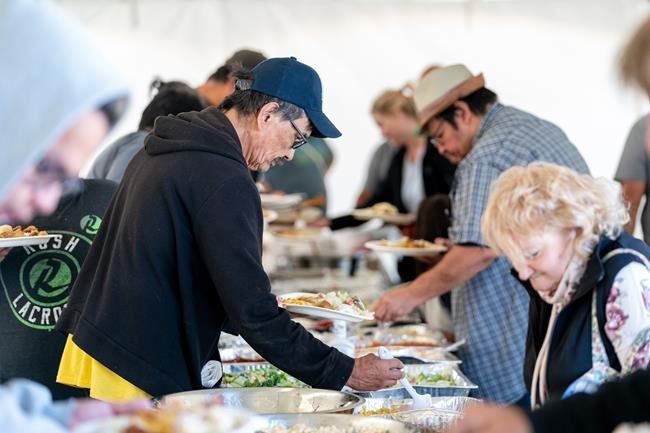JAMES SMITH CREE NATION — Tire tracks worn into the gravel roads that lead into James Smith Cree Nation are deeper than they were two weeks ago, remnants of the heavy police presence and the numerous funeral processions that followed.
Locals have returned to these roads, once again waving as they pass each other to run errands or visit family.
But as the sun sets, which is happening earlier than it did in early September, the fear creeps back in.
Herbert Burns says he keeps his doors locked at night, worried about the anger that lingers in the community — not just from the Sept. 4 stabbings that killed 10 people and injured 18 others in the First Nation and a nearby village, but from generations of trauma stemming from abuse within Canada's residential school system.
"When you have the presence of the devil roaming at will in the community, he will encourage and motivate," Burns said.
His older sister Lydia Gloria Burns, 61, a first responder, died after being stabbed while attending the home of Bonnie Burns, 48, and her son Gregory Burns, 28, who also died.
Vice-chief Alvin Moostoos said the community knew Damien and Myles Sanderson, the suspects in the stabbings. Both brothers are dead: Damien from non-self-inflicted wounds and Myles from medical distress in police custody, RCMP have said.
"But we didn't know the extent of the damage that they've done within our own community, with our own people," said Moostoos, whose first cousin Lana Head, 49, died in the attacks. His brother was also stabbed and has since been released from hospital.
Like Herbert Burns, many others are still locking their doors. Some move furniture against entrances while they sleep to keep possible intruders out, said Elder Ed Stonestand, who also goes by his spirit name of White Lightning Thunderbird.
Religious leaders have been encouraging parents to pray with their children. Some hid while their parents were killed, while others were witnesses at one of the 13 crime scenes.
"It's still real. It's still terrifying. It's still hard," Stonestand said. "A lot of hurt you can feel in this community. A lot of it. Wherever you go. And people have no trust, but they're trying to come out."
Residents attend cultural events, sweat ceremonies and feasts wearing "James Smith Strong" T-shirts. The sacred fire that serves as a spiritual doorway for the dead still dances.
School hasn't returned yet, but one elder, who didn't provide his name, said he worries about his grandchild who doesn't understand why Earl Burns won't be there to drive him to school this year.
The 66-year-old, who took his last breath in his school bus after being attacked, was the school's driver. People on the First Nation say Burns had a positive effect on the lives of their children and youth. Many saw his smile at the start and end of their school day.
Burns was the last of the victims to be buried on Saturday. His wife couldn't attend the funeral as she remains in hospital recovering from the attack.
His burial concluded two weeks of wakes and funerals, allowing some to catch up on sleep for the first time since the attacks.
Volunteers continue helping the First Nation. Some clean up the homes where the crimes took place, throwing away furniture stained with blood. It will need to be replaced by donations that keep flowing in from strangers across the country.
In the early days after the attacks, the First Nation had asked for its privacy as the manhunt for the Sanderson brothers was underway.
"I've talked to some people and they have felt the pain of our people, and they are helping us carry that burden," Moostoos said of the volunteers.
"We never asked for this tragedy, and I hope it never happens in any other community. It hurts people."
Tommy Bird, a member of Peter Ballantyne Cree Nation, brought nearly 700 kilograms of fresh fish from Reindeer Lake, in the province's far north, and fried it for the community alongside other First Nations men from across the Prairies.
"There's a lot we've been through from residential schools, so Native People are hard, especially men," Bird said. "And this is how we express ourselves, by coming out here to cook."
Food continues to be a way to bring the community together. At a traditional fish fry on Sunday — in between bites of walleye, trout and whitefish — people didn't just feed their bellies but their other needs: grief, healing, laughter.
While the community looks to shed the darkness that hovered over it on Sept. 4 and restore order with traditional ceremonies and plates full of bannock, they still await answers.
Moostoos said the First Nation has requested a timeline of the stabbings from RCMP, without the gory details, to help them heal. He said there's no use speculating what happened or why, as it only leads to more rumours.
"Right now we're knocked down," Moostoos said.
"But we will get back up and we'll get back up with pride when our community comes together."
This report by The Canadian Press was first published Sept. 21, 2022.
Mickey Djuric, The Canadian Press




